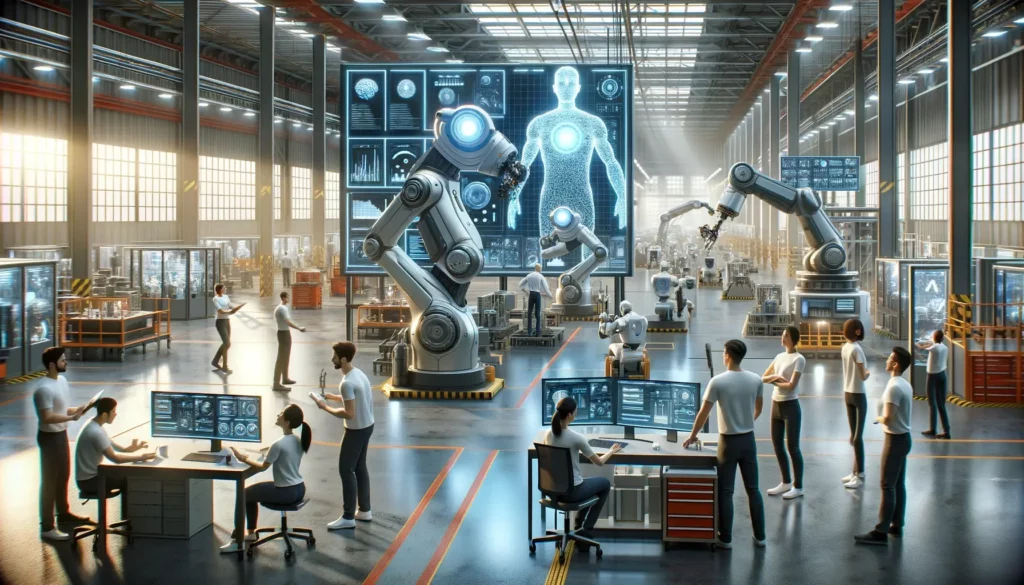
7 Key Trends In The Future of Manufacturing
The manufacturing sector is witnessing an unprecedented transformation, driven by technological advancements and a shifting global economic landscape. As we look ahead at 2024, several key trends are set to redefine the industry. This article explores these developments, offering insights into how they will influence the future of manufacturing while helping you stay relevant and competitive.
1. Embracing Sustainable Practices: A Core Trend in the Future of Manufacturing
Sustainability is no longer just a buzzword; it’s a necessity. In 2024, the manufacturing sector is increasingly adopting eco-friendly practices. This shift is driven by consumer demand for sustainable products and stringent environmental regulations. Companies are focusing on reducing carbon footprints, utilising renewable energy sources, and embracing circular economy models with an eye on the future of manufacturing. This approach not only benefits the planet but also enhances brand reputation and customer loyalty.
Beyond reducing emissions, sustainable manufacturing in 2024 is also about material innovation. Companies are exploring biodegradable alternatives and upcycling processes to minimise waste. For instance, the use of bioplastics is gaining traction, offering a promising solution to the plastic pollution problem. Furthermore, advanced water recycling technologies are being integrated into manufacturing processes, significantly reducing water usage and helping factories become more self-sustaining.
2. Digitalisation and Smart Manufacturing: The Heart of Manufacturing Trends
In 2024, digitalisation is not just about automation; it’s about creating a digital thread throughout the manufacturing process. This thread connects every stage from design to delivery, ensuring seamless communication and data flow. This integration facilitates better decision-making, as manufacturers have a holistic view of the entire process.
Additionally, the use of augmented reality (AR) for training and maintenance is revolutionising the way employees interact with machinery, boosting efficiency and safety; a trend likely to gain even further traction in the future of manufacturing.
And then, smart factories, powered by the Internet of Things (IoT), Artificial Intelligence (AI), and advanced analytics, are becoming the norm. These technologies enable real-time monitoring, predictive maintenance, and enhanced operational efficiency. In 2024, the emphasis is on creating interconnected systems that offer greater control and optimisation of the manufacturing process.
3. Customisation and Personalisation: Redefining the Manufacturing Landscape
One of the most exciting trends in the future of manufacturing is the rise of mass customisation. Advances in technologies like 3D printing and modular design are enabling manufacturers to offer personalised products at scale. This trend caters to the growing consumer demand for unique, tailor-made products, setting a new benchmark in customer satisfaction.
This also extends to the use of advanced materials. Here, manufacturers leverage smart materials that change properties in response to external stimuli, allowing for products that adapt to user needs or certain environmental conditions. This ability to offer dynamic, responsive products opens up new markets and possibilities in sectors like healthcare, aerospace, and consumer electronics.
4. The Human-AI Collaboration: A Synergistic Approach to the Future of Manufacturing
The fear of AI replacing human workers is being overshadowed by a more collaborative approach. In 2024, AI and human expertise are converging to create a synergistic workforce. This collaboration enhances creativity, problem-solving, and decision-making, leading to higher productivity and innovation in manufacturing processes.
In 2024, AI is also being used to enhance employee training and skill development. Through AI-driven simulations and virtual reality (VR), workers are trained in complex tasks without the risk and cost associated with on-the-job training. This approach not only accelerates the learning curve but also ensures a higher level of precision and expertise in the workforce. Expect this trend to continue and most likely increase in popularity in the future of manufacturing.
5. Supply Chain Resilience: A Crucial Aspect of Manufacturing Trends
Recent global events have highlighted the need for robust and flexible supply chains. In 2024, manufacturers are investing in technologies and strategies to build resilience. This includes diversifying supply sources, leveraging blockchain for transparency, and using predictive analytics for better demand forecasting. Such measures ensure continuity and efficiency in the face of unforeseen disruptions.
To further enhance supply chain resilience, manufacturers are also turning to localisation strategies. By establishing smaller, more agile production units closer to end markets, companies can reduce lead times and react more quickly to changes in consumer demand. This localisation also helps in reducing transportation costs and carbon footprints, aligning with sustainability goals.
6. The Role of Automation in the Future of Manufacturing
Automation in 2024 is about intelligent systems that can adapt and learn. With advancements in AI and machine learning, automated systems are not just performing repetitive tasks but also making informed decisions based on real-time data. This evolution is crucial in areas like quality control, where automated systems can detect and correct defects that might be missed by the human eye. Additionally, cobots (collaborative robots) are working alongside humans, enhancing safety and efficiency on the production floor.
7. Predictive Mindset Approach in Manufacturing
The predictive approach in 2024 goes beyond machinery to encompass the entire manufacturing ecosystem. Advanced sensors and IoT devices are embedded throughout the supply chain, offering a comprehensive view of operations. This connectivity allows manufacturers to anticipate fluctuations in demand, supply chain disruptions, and maintenance needs, ensuring a proactive rather than reactive approach. It’s a shift from mere problem-solving to problem-preventing, fundamentally changing how manufacturing operates.
In summary, the future of manufacturing in 2024 is shaped by a confluence of sustainable practices, digitalisation, customisation, human-AI collaboration, supply chain resilience, automation, and a predictive mindset. These trends collectively pave the way for a future of manufacturing where efficiency, resiliency, and innovation reign supreme.
For more interesting articles on all things engineering, manufacturing and technology, please read our weekly blog. Alternatively, if you have a project in mind or just want to see what PRV Engineering is all about, visit our website.


 Mail:
Mail: 




